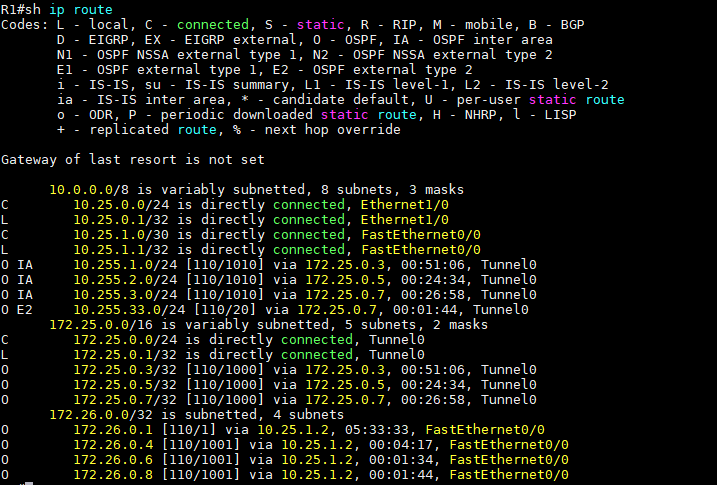Building a use case from the CCDP FLG:
Topology:
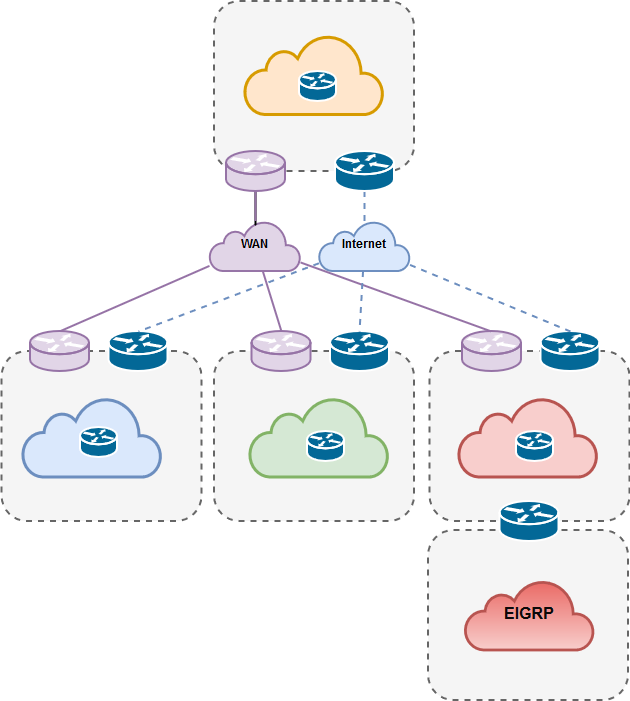
- Each site has two links to their HQ (top) via WAN (Prio) and Internet ( backup ).
- Internet and WAN connectivity goes over multipoint GRE tunnels to the sites with static NHRP mappings.
- Cost of Internet links are increased so they’re used as backup links.
- Backbone area configured over WAN and Internet
Building the LAB:
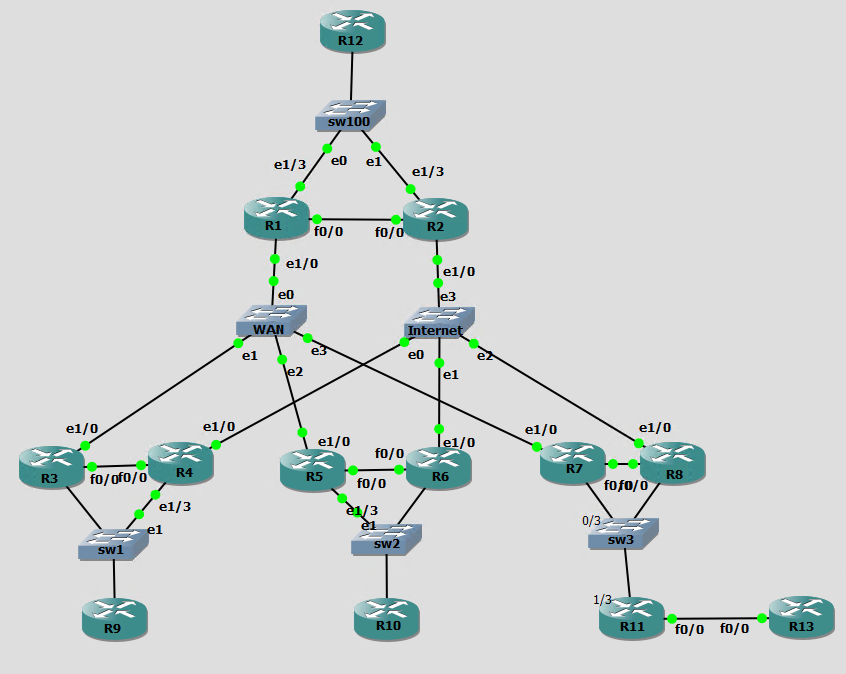
OSPF Design
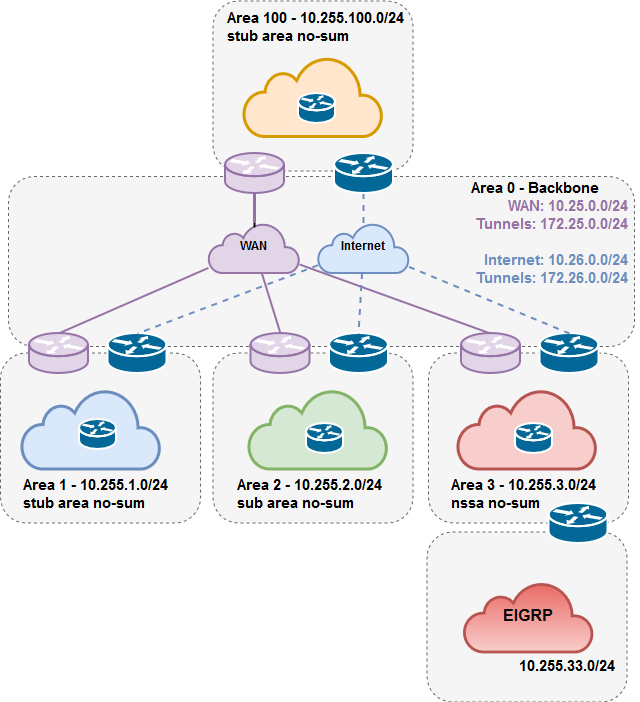
Building the Backbone:
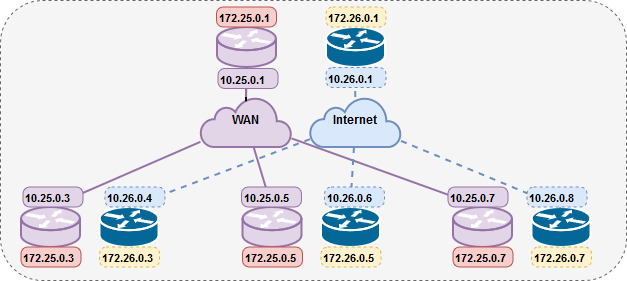
Adding the tunnel interface and NHRP mappings on the WAN Hub Router (R1):
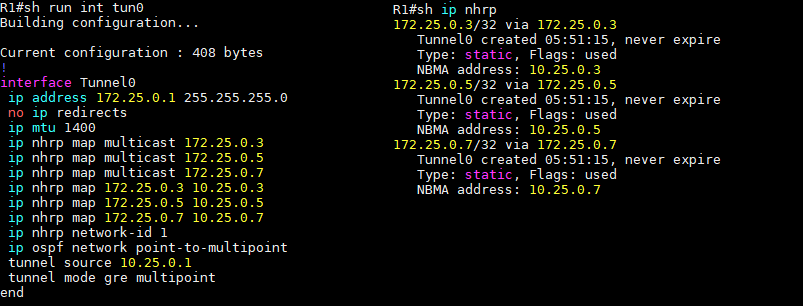
And we have some routing on the Hubs:
